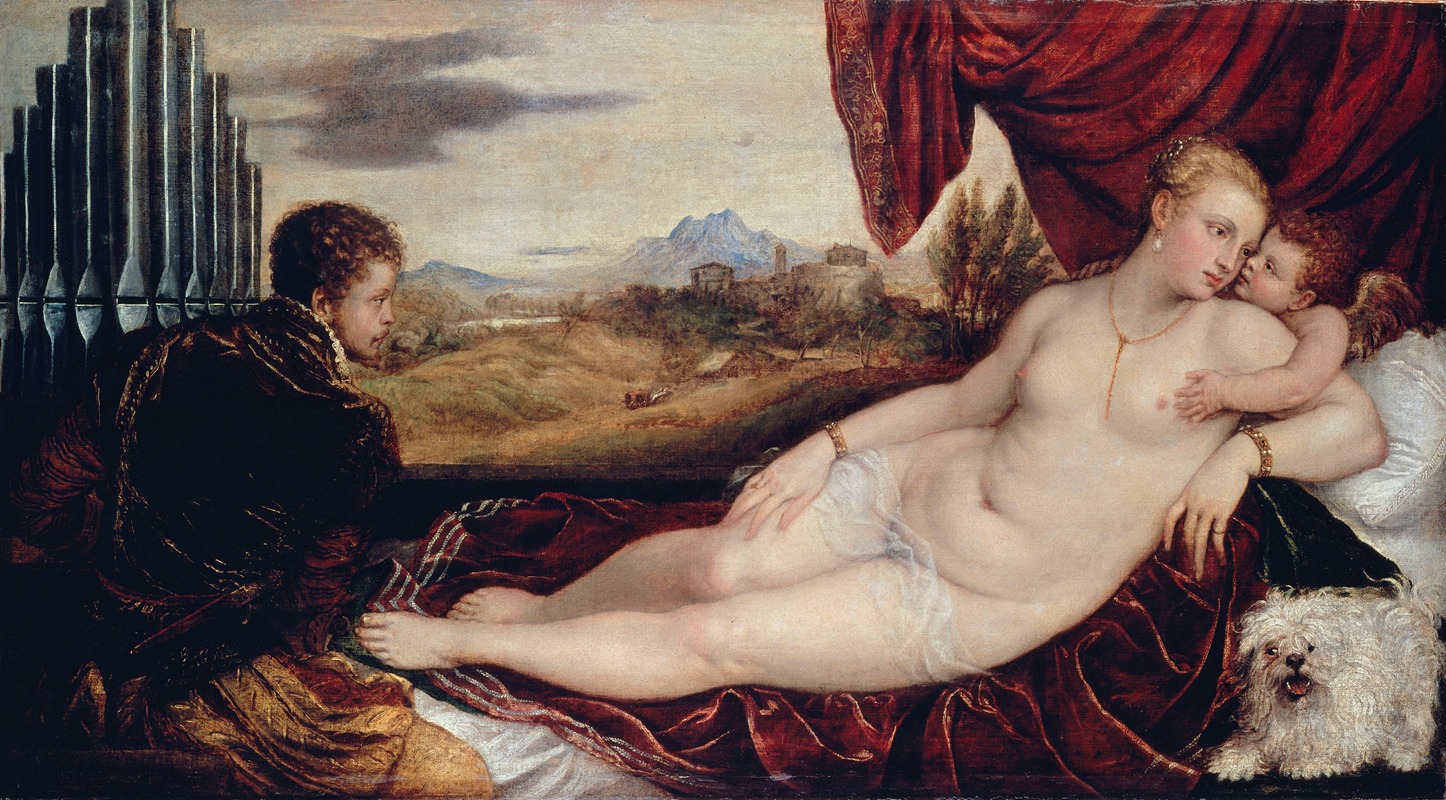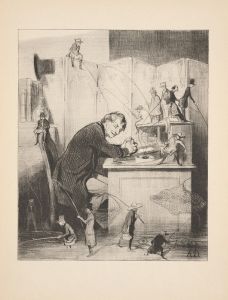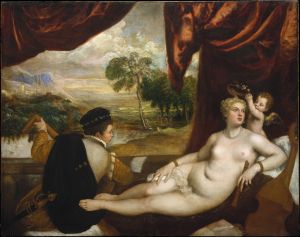
Venus with the Organ Player
A hand-painted replica of Titian’s masterpiece Venus with the Organ Player, meticulously crafted by professional artists to capture the true essence of the original. Each piece is created with museum-quality canvas and rare mineral pigments, carefully painted by experienced artists with delicate brushstrokes and rich, layered colors to perfectly recreate the texture of the original artwork. Unlike machine-printed reproductions, this hand-painted version brings the painting to life, infused with the artist’s emotions and skill in every stroke. Whether for personal collection or home decoration, it instantly elevates the artistic atmosphere of any space.
"Venus with the Organ Player" is a renowned painting by the Italian Renaissance master Titian, created around 1548-1549. This artwork is part of a series of paintings by Titian that explore the theme of Venus, the Roman goddess of love, beauty, and fertility. The painting is notable for its depiction of Venus in a domestic setting, accompanied by a musician playing an organ, which was a common motif in Venetian art of the period.
The painting is executed in oil on canvas and measures approximately 149 cm by 217 cm. It is currently housed in the Prado Museum in Madrid, Spain. The composition of the painting is both intimate and grand, showcasing Titian's mastery of color, light, and texture. Venus is depicted reclining on a sumptuous bed, partially covered with a white sheet, her body turned towards the viewer. Her gaze is directed towards the organ player, who is seated at the foot of the bed, absorbed in his music. The organ player is dressed in rich garments, indicative of the period's fashion, and his presence adds a musical element to the scene, suggesting a harmony between love and music.
The background of the painting features a lush landscape visible through an open window, a common feature in Titian's work that adds depth and context to the scene. The use of light and shadow in the painting is particularly striking, with the soft illumination highlighting Venus's form and creating a sense of warmth and intimacy. Titian's use of color is also noteworthy, with rich, warm tones that enhance the sensuality of the scene.
"Venus with the Organ Player" reflects the Renaissance interest in classical mythology and the human form, as well as the period's fascination with the interplay between the senses. The painting is a testament to Titian's skill in capturing the beauty and complexity of the human figure, as well as his ability to convey emotion and narrative through his art.
Titian, whose full name was Tiziano Vecellio, was one of the most prominent painters of the Italian Renaissance. He was known for his innovative use of color and his ability to convey complex themes and emotions through his work. His paintings were highly sought after by patrons across Europe, and he enjoyed a long and successful career.
"Venus with the Organ Player" is a significant example of Titian's work, showcasing his ability to blend mythological themes with contemporary settings and his mastery of the oil medium. The painting remains an important part of the Prado Museum's collection and continues to be studied and admired by art historians and enthusiasts alike.


















